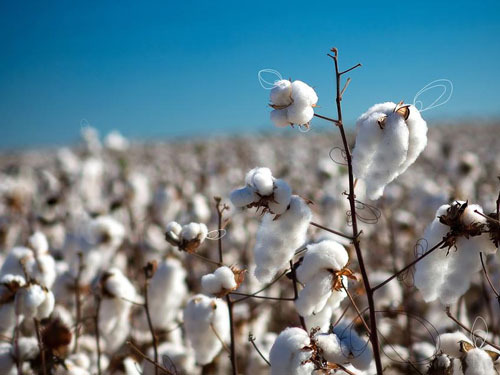High stock cotton decline has not yet reversed
Before the National Day, Zheng Cotton performed a wave of upward trend. The period price was 12,470 yuan/ton from the new low since 2014, and once it went up to 13,840 yuan/ton, an increase of 11%. For this round of cotton surge, I believe that in the current pattern of its fundamentals are still weak, high inventory, cotton prices will continue the downward trend. Women'S Shirt,White Dot Shirt,Female Casual Shirts,Women Off Shoulder Shirts SHAOXING CLOTHO APPAREL CO.,LTD , https://www.clothoapparel.com
The 2014/2015 cotton supply and demand situation has improved, but it is difficult to get rid of high inventory pressure. According to the latest report of the U.S. Department of Agriculture (USDA), the global cotton supply surplus in 2014/2015 has further narrowed compared with the current year, and the supply and demand side has changed in a favorable direction, but the overall situation still shows an oversupply situation, with an excess of 1.284 million tons. This was lower than the 2.333 million tons this year. The output was 25.695 million tons, which was reduced by 149,000 tons compared to the current year; consumption was 24.41 million tons, and the increase was 900,000 tons.
In China, the pattern of supply and demand for cotton is very similar to that of the world. In 2014/2015, the output is forecast at 6.423 million tons, with a consumption of 7.947 million tons and an import volume of 1.742 million tons. The cotton supply and demand is still a pattern of oversupply. However, the surplus has narrowed, from 253 million tons this year to 218,000 tons, which can also be called a wide-balanced pattern.
However, in the new year, China’s cotton ending stocks have been increased by 207,000 tons to 13.697 million tons, which is far beyond the cotton consumption in one year. Comprehensive conversion of China's cotton collection and disposal data in recent years, China's current cotton reserves are expected to be 9.376 million tons, sufficient to meet the next year's cotton consumer demand, the suppression of high stocks will continue to restrict the upside of China's cotton prices.
Looking at the global inventory situation, the data in the past four years shows a trend of steep rises. However, if China's inventory data is removed, its ending stocks and its stock-to-consumption ratio trends are not so obvious. In other words, the trend of the global cotton in the later period will also look into the cotton stocks.
The direct subsidies policy led cotton prices to return to market. With the approval of the State Council, the Implementation Plan for the Trial Implementation of Cotton Target Price Reform in Xinjiang was formally implemented by the National Development and Reform Commission and the Ministry of Finance on September 16. According to the “Implementation Planâ€, the pilot policy for the reform of cotton target prices in Xinjiang mainly includes the following aspects: First, cancel cotton purchase and storage policies. The government does not interfere in market prices, prices are determined by the market, and producers sell cotton at market prices. The second is to implement target price subsidies for Xinjiang cotton. The target price of cotton is announced before planting. When the market price is lower than the target price, the state will subsidize the producer in the pilot area based on the difference between the target price and the market price; when the market price is higher than the target price, no subsidies will be issued. The third is to improve the subsidy method. The target price subsidy is linked to the planting area, the amount of seed cotton to be sold, and the planting variety.
The cotton purchase and storage policies have been directly subsidized, and policy intervention in cotton prices has weakened. New cotton prices will be re-determined by the basic supply and demand in the cotton market, and cotton prices will be returned to the market. In the later period, it is expected that the difference between cotton prices at home and abroad will gradually shrink. At the same time, the cotton price in China will continue to be weak in the current situation of low cotton prices.
At the same time, according to the guidance of the direct subsidies policy, we believe that the trend of cotton prices in the latter period will be mainly formed by the ginning factories and textile companies. However, at present, China's cotton stocks are high, and the downstream consumption of cotton remains flat. The price actually depends on the order status of downstream textile companies. This means that the risks for the ginning factories will significantly increase the purchase and sales of cotton in the future. At the same time, the direct implementation program mentioned that the cotton processing enterprises will deposit all the processed lint into the Xinjiang cotton supervised warehouses that are accredited by the autonomous regions. On the one hand, it will increase the various cost costs in the process of supervising the library public inspection; On the one hand, the latter cotton processing companies may be subject to a supervision bank when selling cotton, making the time for cotton to be released out of the warehouse slow when selling cotton and delaying the time for repayment.
In response to this expectation, we propose that ginning factories use the market to protect the business of cotton this year by using the selling period.
To sum up, in 2014, China’s policy was changed from direct savings to direct subsidies, lacking the substantive support of policies; although the overall pattern of supply and demand has improved, but it continues to increase high inventory, cotton prices are expected to be under pressure in the new year, Zheng cotton main The large 1501 contract operating trend will continue to fluctuate downwards.